Kingsbridge, Devon
Up to 1834
A parliamentary report of 1777 recorded parish workhouses in operation at Kingsbridge (for up to 20 inmates), East Allington (20), West Alvington (30), Aveton Gifford (40), Bigbury (20), Blackawton (34), Loddiswell (25), Malborough (28), Ringmore (20), and Thurlestone (20).
A house dating from 1822 on Brook Street in Slapton was used as the parish's workhouse.
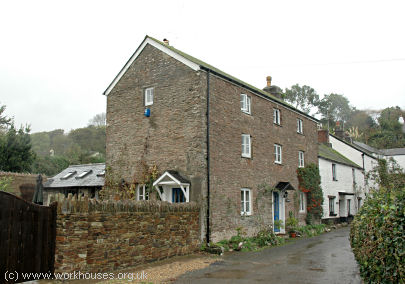
Slapton's former workhouse on Brook Street, 2005.
In Thurlestone, a poorhouse once operated in a row of cottages at 1-3 Church Street.
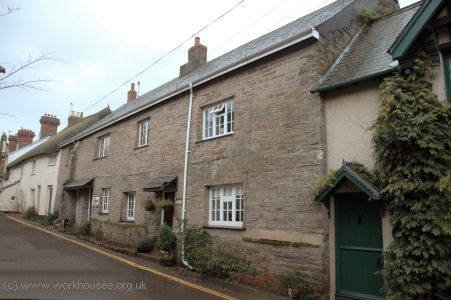
Church Street cottages in Thurlestone, 2005.
In South Milton, Shute Cottages are believed to have once housed the parish poorhouse. The building, which dates back to the 16th century, is very characteristic of the area.
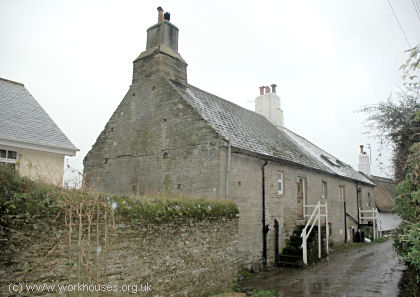
Shute cottages in South Milton, 2005.
After 1834
The Kingsbridge Poor Law Union was formed on 22nd June 1836. Its operation was overseen by an elected Board of Guardians, 41 in number, representing its 26 constituent parishes as listed below (figures in brackets indicate numbers of Guardians if more than one):
Devon: East Allington, West Alvington (2), Aveton Gifford (2), Bigbury, Blackawton (3), Buckland Toutsaints, Chivelstone, Charleston, Churchstow, Dodbrooke (2), South Huish, Kingsbridge (5), Loddiswell (2), Malborough (3), South Milton, Modbury (3), South Pool, East Portlemouth, Ringmore, Slapton, Stokenham (3), Sherford, Stoke Fleming (2), Thurleston [Thurlestone], Woodleigh.
The population falling within the Union at the 1831 census had been 20,164 with its parishes ranging in size from from Buckland Toutsaints (population 46) to Modbury (2,116) and Kingsbridge itself (1,586). The average annual poor-rate expenditure for the period 1834-36 had been £9,069 or 9s.0d. per head of the population.
The Kingsbridge Union workhouse was built in 1837 at the west of Kingsbridge. It was designed by Thomas Ponsford who was also the architect of the Totnes Union workhouse. In 1837, the Poor Law Commissioners authorised the sum of £5,673 on construction of the building which was intended to accommodate 350 inmates. The Kingsbridge design was based on the popular square design by Sampson Kempthorne published by the Commissioners in 1835. The workhouse location and layout are shown on the 1906 map below.

Kingsbridge site, 1906.
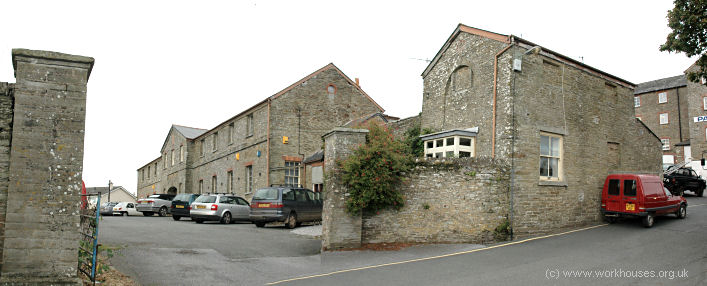
Kingsbridge entrance from the south-east.
© Peter Higginbotham.
A two-storey entrance block at the south would probably have contained the Guardians' board-room and porters's lodge.
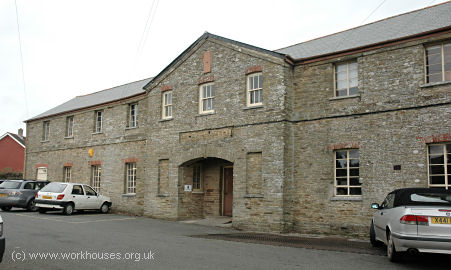
Kingsbridge entrance block from the south-east, 2005.
© Peter Higginbotham.
The three-storey main accommodation block at the centre of the site, and service buildings to the north, possibly including a small infirmary.
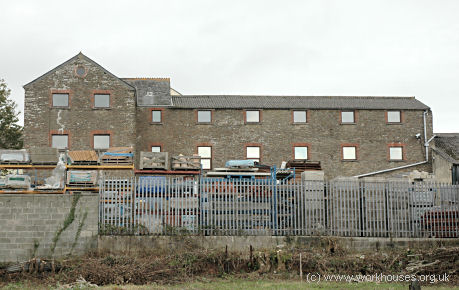
Kingsbridge west end of main building from the south, 2005.
© Peter Higginbotham.
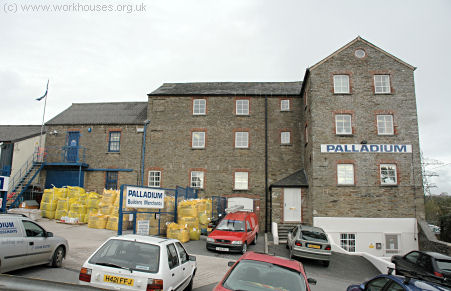
Kingsbridge east end of main building from the south, 2005.
© Peter Higginbotham.
The workhouse was situated directly to the west of the Kingsbridge Town Hall. Local legend has it that the Town Hall clock deliberately had no face showing towards the workhouse so that the inmates could never be "clock-watching".
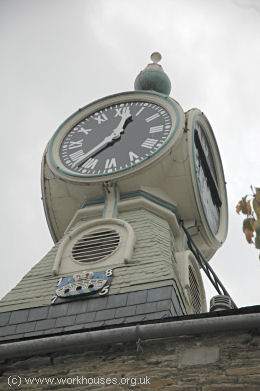
Kingsbridge Town Hall clock from the north-west, 2005.
© Peter Higginbotham.
In 1896, the death occurred at the workhouse of an imbecile inmate named Rawle. An account of the subsequent proceedings was given by Poor Law Inspector Herbert Preston-Thomas:
After making full investigation I came to the conclusion that the fact that Rawle's special mania had not been made known either to the Master or the Medical Officer precluded me from attaching blame to them, but it was obvious that more effective supervision was required, and I persuaded the Guardians to separate the imbeciles and appoint an officer to supervise them.
After 1930, the workhouse was redesignated as a Public Assistance Institution under the control of the Devonshire County Council, becoming known as Homelands.
In January 1959, a fire caused severe damage to the central part of the buildings, by then used as a furniture store, agricultural engineering workshops, and flour and corn store. The surviving buildings are now used as various small business premises.
Staff
Inmates
Records
Note: many repositories impose a closure period of up to 100 years for records identifying individuals. Before travelling a long distance, always check that the records you want to consult will be available.
- Devon Heritage Centre, Great Moor House, Bittern Road, Sowton Exeter EX2 7NL. Virtually no local records survive.
Bibliography
- None.
Links
- None.
Unless otherwise indicated, this page () is copyright Peter Higginbotham. Contents may not be reproduced without permission.


